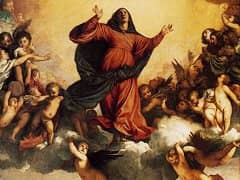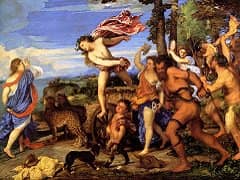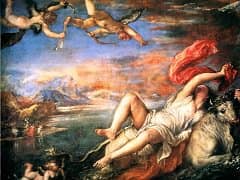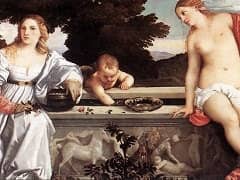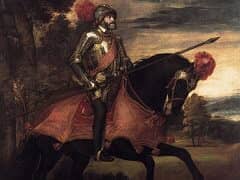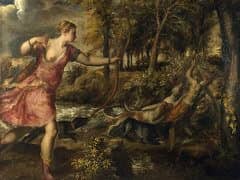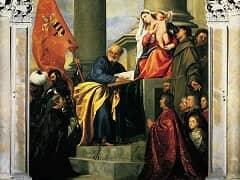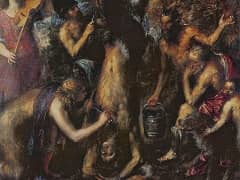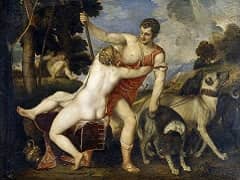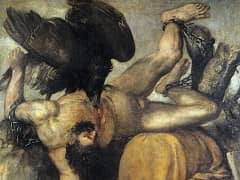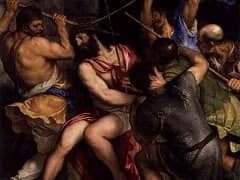Noli me Tangere, 1514 by Titian
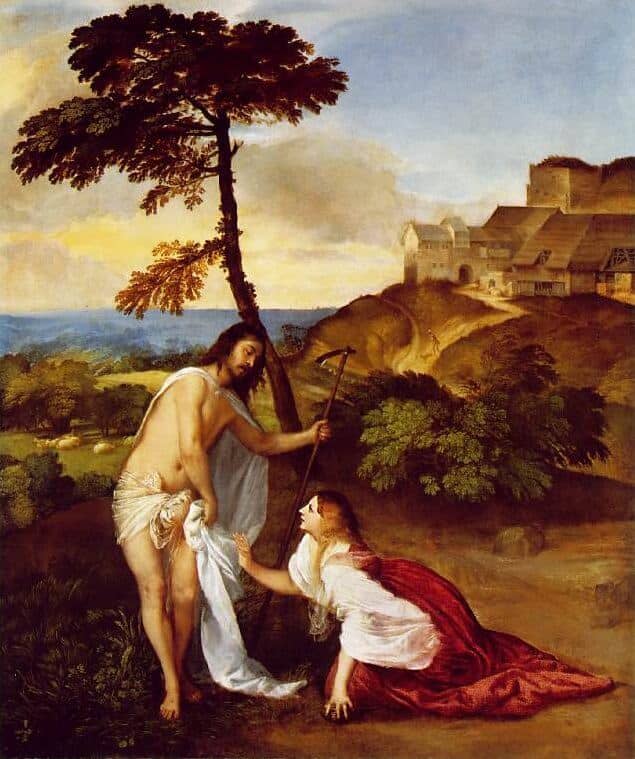
Noli me Tangere is one of the earliest works by Titian.
Christ appears to the Magdalen after the Resurrection to comfort her. At first she thinks he is a gardener; when she recognises him he tells her not to touch him - 'noli me tangere'
(let no one touch me) - as told in the Gospels (John 20: 14-18). Elsewhere, the Bible records that Christ will soon ascend to heaven and send the Holy Spirit down to his followers: he
does not want them to cling to his physical presence.
Mary Magdalen has just recognized Jesus by the tone of voice in which he calls out "Mary!' Titian shows the surge of emotion which casts her to the ground, an impulse just as quickly
suppressed by Christ who draws back, speaking the words, Noli me tangere, 'Don't touch me." The painter has left out most of the references which traditionally help to identify the scene:
there is no tomb, no herald angel. no halo, no standard marked with the cross in the hand of the resurrected Lord. Titian contents himself with placing a hoe in Jesus' hand, a reference to
Mary's first mistaken impression of him (she mistook him for a gardener), and by placing in the woman's hand the now unneeded jar of ointment. Rather, the painter innovates by evoking the
resurrection through the nakedness of Christ's body, covered only by the shroud in which he had been buried - a shroud whose white draping magnificently complements the red flow of Mary's
garment. He accentuates the tension in the woman's movement and the closeness of the two people whose right hands would touch were it not for Christ pulling back in a subtle movement
of refusal nuanced by the affectionate inclination of his torso bending over Mary Magdalen.
The atmosphere is that of the dialogue between the lover and the beloved in the Song of Songs: "I sought him whom my heart loves." Here Mary Magdalen finds the beloved she had lost only to
be immediately asked to let him go again, to 'stop holding on to him" and to go back to his brothers to share with them the news that is to transform their lives (Jn 20: 18).
For Christ is just passing by. His dance like steps are directed towards the front of the painting, not towards Mary but towards us, the viewers. We thus find ourselves facing the Lord's
approach, also invited to recognize him and to announce the joy of his resurrection.

